
Gelidiella is a genus of red algae. Worldwide there are 22 species of Gelidiella, mostly tropical and subtropical. Gelidiella and Gelidium are now both united into one order Gelidiales.
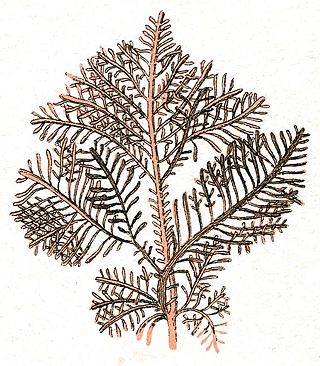
The Gelidiaceae is a small family of red algae containing eight genera. Many species of this algae are used to make agar.

Gelidium is a genus of thalloid red algae comprising 134 species. Its members are known by a number of common names.

Kappaphycus is a genus of red algae. Species are distributed in the waters of East Africa, Indonesia, Malaysia, Hainan Island, the Philippines, and Micronesia.
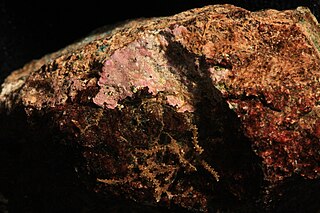
Hildenbrandia is a genus of thalloid red alga comprising about 26 species. The slow-growing, non-mineralized thalli take a crustose form. Hildenbrandia reproduces by means of conceptacles and produces tetraspores.

Galaxauraceae is a family of red algae (Rhodophyta) in the order Nemaliales.
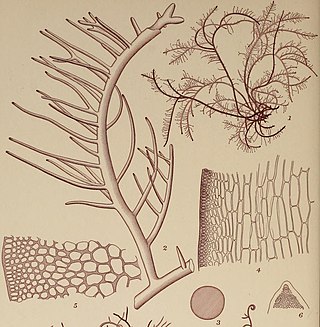
Hypnea is a genus of red algae, and a well known carrageenophyte.

Batrachospermaceae is a family of fresh water red algae (Rhodophyta). Genera within the Batrachospermaceae generally have a "Lemanea-type" life history with carpospores germinating to produce chantransia. Sporophyte phase with meiosis occurs in an apical cell to produce the gametophyte stage. Pit connections have two pit plug cap layers with the other layer enlarged. This family of freshwater red algae is uniaxial, meaning each filament with a single apical cell. The genera included within Batrachospermaceae are listed in the table below.

Callithamniaceae is a family of red algae (Rhodophyta) in the order Ceramiales. The family was first described by Friedrich Traugott Kützing in 1843.
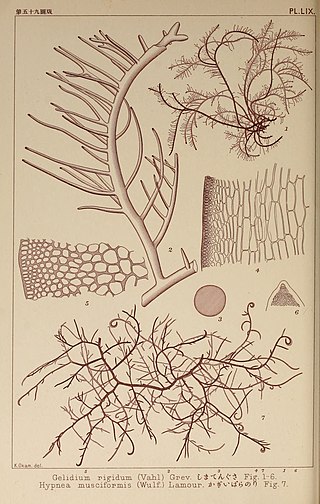
The Gelidiellaceae is a small family of red algae containing 5 genera of agarophytes.
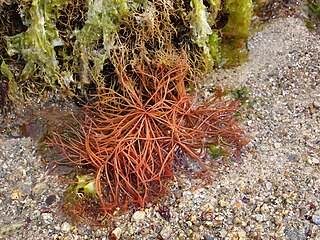
The Gracilariaceae is a small family of red algae, containing several genera of agarophytes. It has a cosmopolitan distribution, in which 24 species are found in China, six in Great Britain and Ireland, and some in Australia and Chile.
The Pterocladiophilaceae is a small family of red algae containing 2 genera of thallus parasitic algae.

Naccariaceae is a family of red algae in the order Bonnemaisoniales, with 3 monotypic genera that are found in both the Pacific and Atlantic Oceans.

Wrangelia is a genus of red algae in the family Wrangeliaceae.
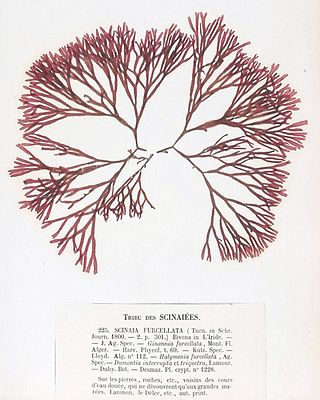
Scinaiaceae is a family of red algae (Rhodophyta) in the order Nemaliales.
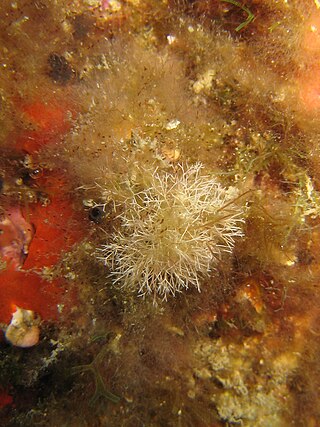
Liagoraceae is a family of red algae (Rhodophyta) in the order Nemaliales. The type genus is LiagoraJ.V.Lamouroux.
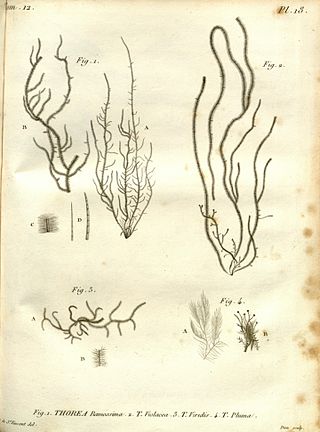
Thoreales is an order of red algae belonging to the class Florideophyceae. The order consists only one family, ThoreaceaeHassall, 1845. The family of Thoreaceae was circumscribed by Arthur Hill Hassall in A history of the British freshwater algae, including descriptions of the Desmideae and Diatomaceae in 1845.
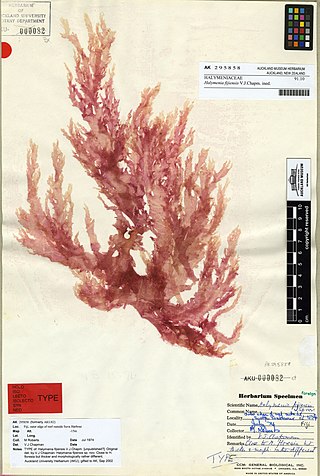
Halymeniales is an order of red algae belonging to the class Florideophyceae and the subclass Rhodymeniophycidae.

Peyssonneliales is a monotypic order of red algae belonging to the class Florideophyceae and the subclass Rhodymeniophycidae. It contains only 1 known family, PeyssonneliaceaeDenizot, M., 1968.

Hildenbrandia rivularis is a species of freshwater red algae. It forms red, crusty thalli on stones submerged in water, typically in streams and rivers, less commonly in lakes and brackish parts of seas. It occurs in scattered locations on almost all continents. The species was formerly considered an indicator of clean or slightly polluted waters. The scientific genus name is sometimes spelled in various orthographic variants, especially as Hildenbrandtia. The life cycle of this species was described by the Polish hydrobiologist Karol Starmach.
















